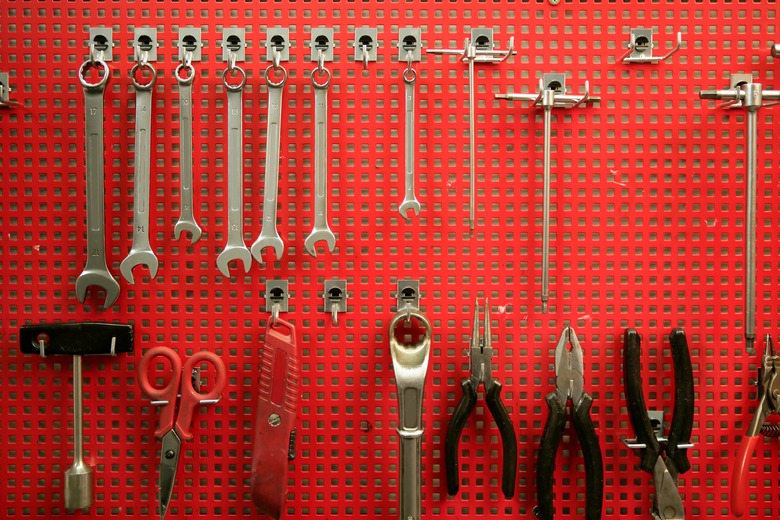How To Store Tools And Equipment
We may receive a commission on purchases made from links.
Whether you're an avid DIYer or you keep a few tools around for emergency repairs, proper storage of tools and equipment is a must. Several tool storage options are safe and easy to use, allowing you to customize your tools and equipment to best fit your needs. No matter which tool storage option you choose, the important thing is providing a protected environment for the equipment.
Why Proper Tool Storage Matters
Why Proper Tool Storage Matters
You invest a lot in your tools, so you want them to last as long as possible. Proper storage protects your tools and equipment from breaking, rusting, or having other damage that makes them stop working prematurely. Adequate tool storage also helps keep everything organized so it's easier to find the things you need when you're mid-project.
Ideal Tool Conditions
Ideal Tool Conditions
Whether you create a DIY tool organizer or buy tool storage solutions, the location and conditions are a priority. Tools should stay in a dry, clean area to make them last as long as possible. Humidity can cause rust to develop, which can make tools stop working properly. Dirt can also get inside tools and cause them to malfunction prematurely. Avoid areas with extreme temperature swings, which can be hard on your equipment.
If you don't have a dry spot to store your tools, consider adding a dehumidifier to the storage area to cut down on moisture. Tossing silica gel packets inside enclosed tool storage containers can also cut down on damaging moisture.
Tool Storage Options
Tool Storage Options
It's common to have a combination of tool storage systems, especially if you have a large collection of tools. Some of the storage solutions include:
- Portable toolbox: A handheld toolbox is ideal for your frequently used tools since you can easily take them with you. Choose one with built-in organization, such as a toolbox with a removable tray.
- Tool bag: A similar option is a tool bag with soft sides. While it doesn't offer the rigid sides of a toolbox, it zips to keep your tools away from dirt and is portable.
- Tool chest: If you have a workshop, a large rolling tool chest offers lots of drawers and compartments to keep tools enclosed and protected from dirt and debris. Many models have locking drawers to reduce theft.
- Pegboards: Another popular workshop or garage option is a tool pegboard with various brackets and bins that you can rearrange. This lets you customize the storage and keeps tools easily accessible. It doesn't protect them from dirt and debris, though, so you'll need to regularly dust them off and keep them clean.
- Wall racks: For garden tools and other large equipment, a wall-mounted tool rack is an easy way to keep the items off the floor, organized, and easily accessible.
- Cabinets: Enclosed cabinetry offers a permanent storage solution in your workshop area. The doors provide some protection from dust and debris to help keep tools clean.
- Open shelving: For larger items, open shelving is a storage option. This option doesn't provide any protection from dust.
Tips for Storing Tools
Tips for Storing Tools
Always clean tools before storing them to keep them in optimal condition. Wiping off dust, grease, and other debris prevents them from getting jammed or corroded in storage. Ensure the tools are completely dry before putting them away.
Keeping the original packaging also makes storage easier. Many power tools come with cases that provide protection against impact and offer convenient storage. They might come with foam inserts with cutouts that perfectly fit the tool for extra protection.
